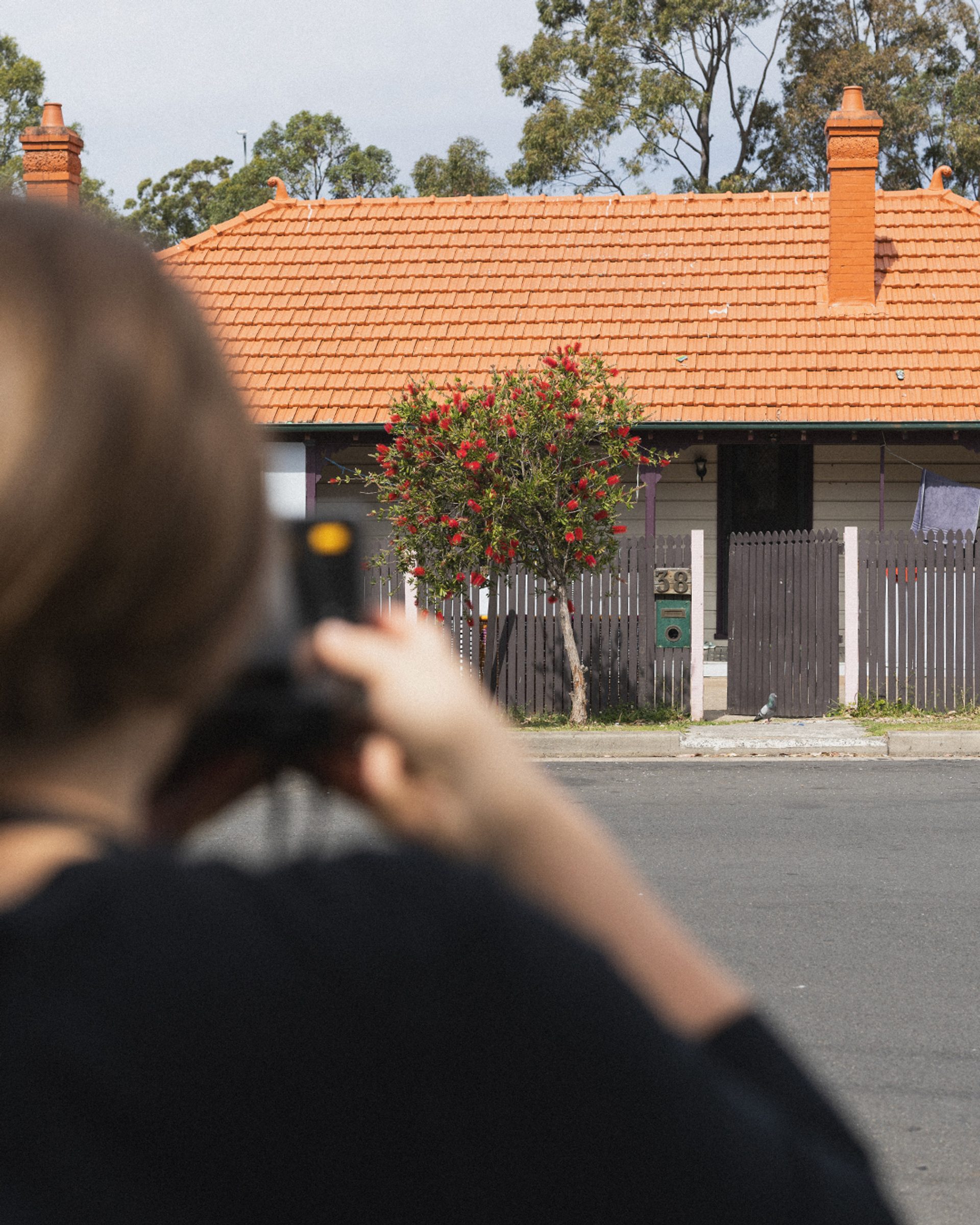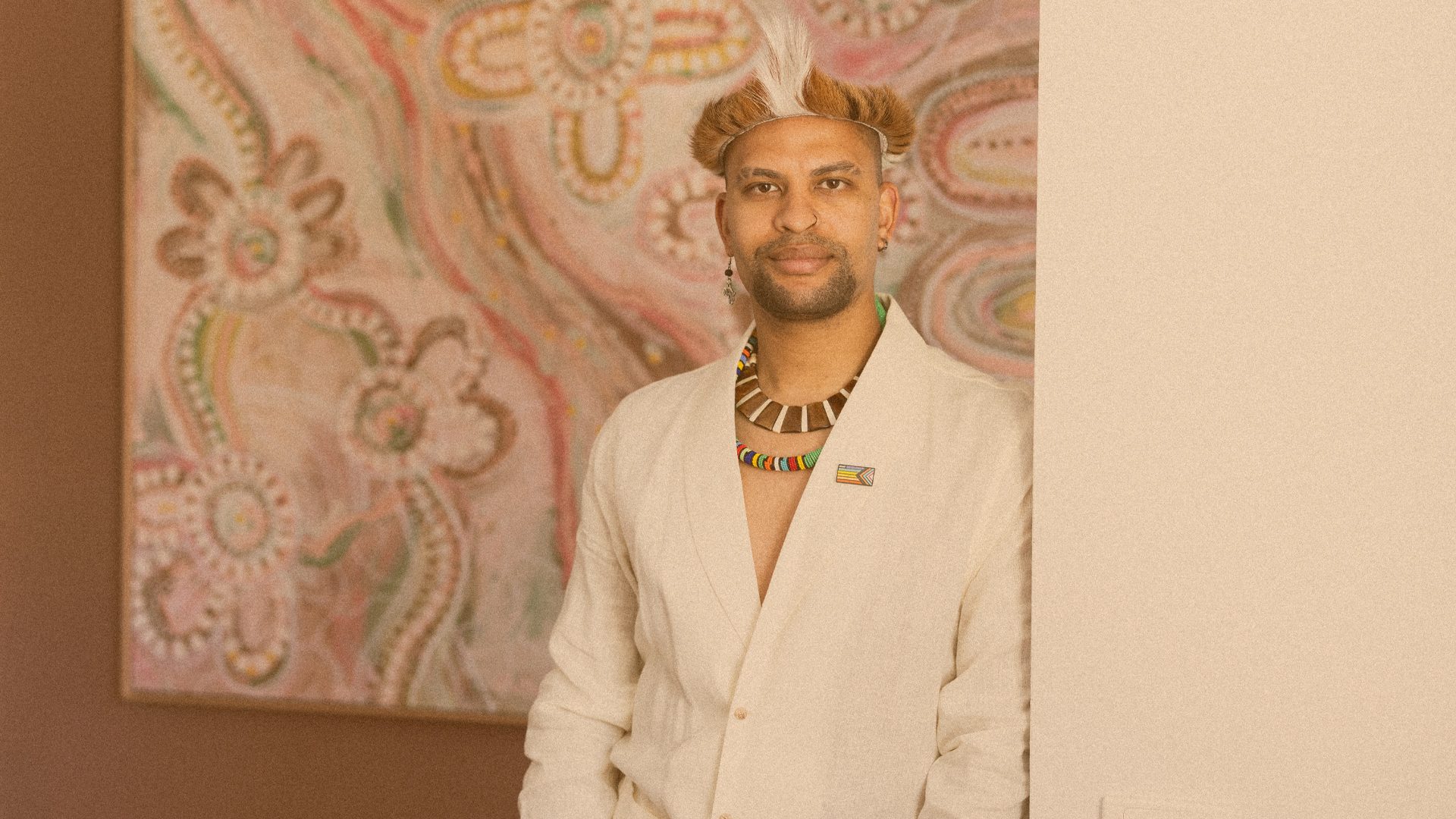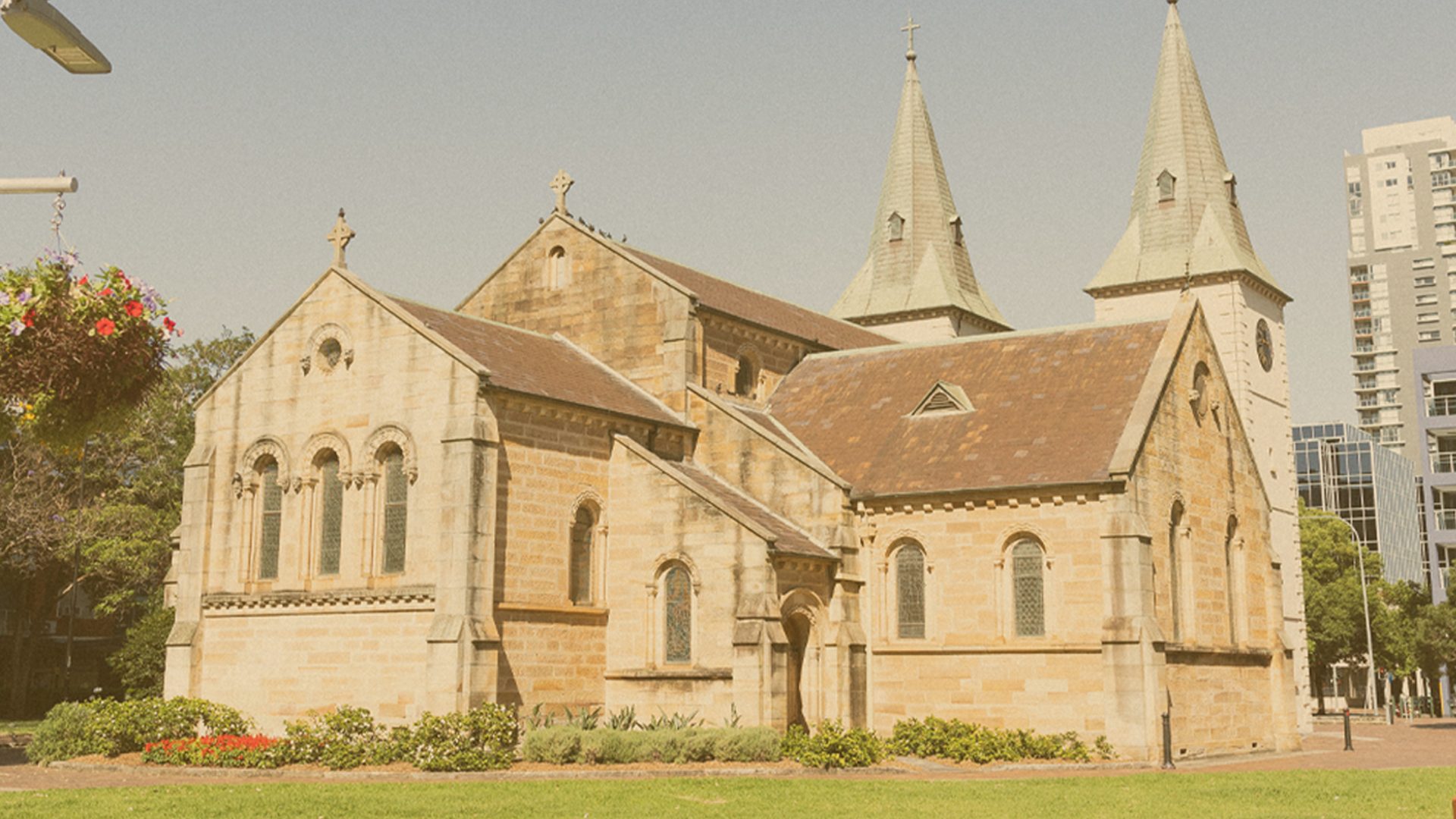Redefining home

Discovering a collection of old Polaroid cameras sent Hayley Megan French in a new creative direction and reshaped her sense of home.
From within my Zoom meeting screen, artist Hayley Megan French leans towards me from the living room of her Harris Park apartment. Her partner Rob sits beside her and between their slight shuffles I can see a sliver of their home ― a spread of picture frames across the far wall, a bright couch and a shadow left of my screen from a floor to ceiling bookshelf.
‘When she says she has a lot of books...’, Rob begins and gestures towards the shelves behind. He estimates Hayley has enough books to cover nine square metres and Hayley laughs wide, recalling the stress of her book collection being packed away by removalists.
Hayley's concern for her books is only a fraction of her broader desire to craft and preserve her home as her own. It highlights the couple’s determination to make their home reflect only themselves. Years prior, Rob and Hayley bought a block of land in Guildford to one day build a house and call it their family home. Before they commenced building, they moved out of Hayley’s parents’ house to a studio apartment in Parramatta as an interim step. The couple then moved into a rental home in Guildford to settle into what would become their neighbourhood.
I started walking around Guildford with a camera. Photography became a form of note-taking; what makes a suburb also makes a home.
When they moved into this second rental, the pair rummaged through what had been kept in various storage locations – their parents’ homes and storage lockers – to consolidate their belongings. They unearthed a collection of broken and unused Polaroid cameras that went on to be a key element in Hayley’s visual art practice.
‘It was an amazing discovery, because, as an artist, it introduced a new way of thinking about my work and about Guildford itself,’ Hayley says.
As Hayley explains it, the polaroid cameras became a mediator: ‘I started walking around Guildford with a camera. Photography became a form of note-taking; what makes a suburb also makes a home.’


Taking photos around the neighbourhood, Hayley became increasingly interested in finding a way to paint her local area. She had placed these photos around her home studio and, as she worked, they influenced her colour palette for sketches she had been working on in her backyard.
Hayley thought painting directly on top of the Polaroids may help her think through compositional ideas. This rapidly evolved into a way of working. She enjoyed painting over the photos to contemplate the walks she undertook and her local community, noticing details she had previously disregarded in the diverse architecture, gardens and buildings. Her photos became photo stories, nurturing her definition of home and that of her neighbours.
Hayley quotes French philosopher Frédéric Gros who has written that walking slowly generates familiarity.
From 2018, the painted-over Polaroids became the start of an ongoing series called The Pipeline ― Hayley having now repeated the process in other places she has called home, such as Toowomba and Toogoolawah in Queensland.
To correspond with a 2020 exhibition of the first 62 works in the series at Galerie Pompom in Chippendale, Sydney, Hayley made a daily post on Instagram accompanied by anecdotes and references.
One post shared an image of a bus stop on the artist’s street, which she passes on her walk to the local family-run grocer. The image harbours a Venetian red, recurring as a prominent colour motif in her Guildford pieces. Yet, the bus stop itself is a reclusive box of blue; understated. It demonstrates that though it is perceived as insignificant, familiarity of the environment allows one to understand it as the central conduit for movement between homes and neighbourhoods.
Hayley quotes French philosopher Frédéric Gros who has written that walking slowly generates familiarity. This is a crucial aspect of Hayley’s project as she explores her neighbourhood. A book compiling these works and their anecdotes provides insight into the processes and research behind the work.



Following our interview, she sent it to me and in reading it, I could acknowledge the dual private and communal influence upon one’s abode. Even though Hayley’s home is a personal space, she has extended it into an art project that invites strangers in.
As she collects her images and compositional inspiration from her neighbourhood, Hayley captures that complicated sense of home we all feel by allowing what she sees in her neighbourhood to directly and organically manifest in her art ‒ an amalgamation of how we are constantly finding, protecting and re-defining our personal place.
Even though Hayley’s home is a personal space, she has extended it into an art project that invites strangers in.
As a result of this body of work, Hayley now describes her relationship to home as being ‘expressed as a verb’. Though she and Rob are looking to establish a physical place for their family, they have adapted and evolved their space into what they require from it.
In creating her own home, Hayley expresses her aesthetic drive by incorporating her sense of art, colour, light and space. It’s about ‘making the feeling’, she says. ‘We have beautiful things in our home and I enjoy playing around with where they should be.’
Art, like the home, is everywhere, yet never manifests the same way twice.
‘It’s been a big part of our relationship,’ Hayley remarks as she considers the creation of her and Rob’s home influenced by her art, ‘And the way we think as a couple, so our idea of home has evolved. It solidified how much we value being involved with our community.’


About the Author
Ashleigh Dalzell is a writer, living in the Blue Mountains. Throughout her work she experiments with structure, perspective and poetics. She particularly enjoys writing middle-grade fiction. Dalzell is completing a Master of Research in literature and literary theory at Western Sydney University.
About the Series
Parramatta Profiles is a writing and photographic series that profiles individuals across Parramatta communities. Drawing on art, music, religion, activism and sport, each snapshot captures life in this dynamic city. A collaboration between Powerhouse and the Writing and Society Research Centre, Western Sydney University, this project supports the development of student writers by providing an opportunity to work with professional editors and be published by Powerhouse online.





























